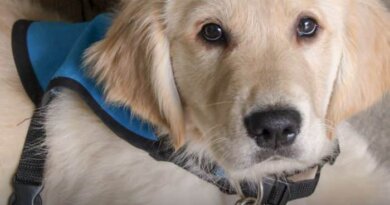When Sleep Becomes a Nightmare: My Struggle With Narcolepsy
As I snapped back into consciousness, I found myself driving on the wrong side of a road that ran parallel to a beach, with traffic heading straight at me. Stunned, I yanked the steering wheel to get back into the right lane but somehow lined myself up perfectly with a telephone pole. My brain furiously tried to process what was happening as I realized that the brakes weren’t going to save me. Rapid-fire images of my mother, my father, my dog – and then an imagined fireball from the imminent impact – raced through my head. When I slammed into the pole, the airbag opened, but luckily there was no fireball. In shock, I stumbled out of the car, sat down on gravel, and considered whether I should stop driving forever.
At the time of the crash, I had been experiencing bouts of intense daytime drowsiness, attacks that ranged from brief nod-offs to full-on sleep, for about 2 years. This wasn’t my first car accident, but it was the scariest.
Two weeks later, I was headed out of the city to go hiking with my friend C.J., a doctor (don’t worry, he was driving). He insisted that I needed to see a sleep specialist, stat. I pushed back. I had already gone to my primary care doctor, I explained, and he thought I was probably just working too hard. My doctor raised other possibilities – Epstein-Barr, depression – but said maybe I just needed to go to bed earlier.
I told C.J. if my doctor wasn’t alarmed, I shouldn’t be either, despite all evidence to the contrary. The next thing I remember, C.J. was yelling my name. I looked over and he was shaking his head. “You see the irony, right?” he asked. “You just fell asleep from narcolepsy while telling me you don’t have narcolepsy.”
Getting Educated About Sleep
The next week, I went to a sleep specialist and spent the night with electrodes attached to my scalp and a heart monitor affixed to my chest, undergoing a test called a polysomnogram (PSM), which measured my vital signs, brain waves, and movements. That was followed, after breakfast, by a multiple sleep latency test (MSLT), during which I took a nap every 2 hours throughout the day and the same information was recorded.
After these tests, my new doctor gave me the diagnosis that C.J. had predicted and, to be honest, I had suspected and resisted: narcolepsy. I became one of the 250,000 reported cases in the U.S., about 1 in 2,000 people. Some experts, factoring in underreporting and underdiagnosis, estimate that the true number is closer to 500,000.
“Some doctors are not educated about sleep in the way they should be,” says Emmanuel Mignot, MD, PhD, director of the Stanford Center for Narcolepsy. “But it’s not only the doctors who are missing the signs. It’s also the patient who doesn’t tell.”
Narcolepsy can be mildly amusing, like when I texted a friend, “dandifies bad s. ah! jets 1pm. tbkuhht was Margery.” But when you repeatedly send gibberish to people – especially colleagues at work – it’s not so funny. Narcolepsy can be embarrassing, like the two times I nodded off on dates, or the time I fell asleep on the bench press at the gym. I have missed large chunks of movies as well as many subway stops. My sleep attacks aren’t refreshing in the least. They cause brain fog, discombobulation, and fatigue.
While I was the poster child for the patient in denial, I had a mortal fear of nodding off at work. To resist even the mildest hint of microsleep, I would bite down hard on my thumb, sometimes breaking the skin. When every minute of every day is plagued with worry that you might embarrass yourself, harm your career, or even physically injure yourself or someone else, you start to think about becoming a recluse. And the social stigma that brands people with narcolepsy as lazy, or staying out all night, doesn’t help.
Narcolepsy’s Nasty Companion
Left untreated, narcolepsy can hold you back both socially and professionally, to say nothing of wreaking havoc on your mental health. In my case, narcolepsy magnified a preexisting condition: anxiety. From the moment I woke up, I agonized about falling asleep at inopportune times. I spent extra energy and brainpower all day, monitoring myself for signs of impending sleep attacks. I felt constantly on high alert, and I was mentally and physically exhausted.
Anxiety became narcolepsy’s nasty companion, part of a two-front battle. I often crashed early, sleeping intensely after the grueling toll of the day and requiring four alarms to wake up. My days then started with me feeling foggy and groggy. I’m not surprised that those who have the disorder for years experience a reduced income and a lower standard of living than the general population. It’s unsustainable.
Just as the sleep attacks strike suddenly, so does the condition itself. Many people develop narcolepsy in their late teens or 20s. Mine appeared when I was 40, and its cause, at least in my case, is unknown, which aligns with the Mayo Clinic’s findings. Researchers such as Mignot believe they may have cracked the code, citing a connection between narcolepsy and low levels of hypocretin, which helps regulate alertness. The hypocretin deficiency is likely caused by an autoimmune reaction, but the predisposition for it may be rooted in our genes. Narcolepsy can be triggered by the flu, another virus, or inflammation, but in most cases, doctors can’t pinpoint the specific cause.
Although there’s no cure for narcolepsy, there are multiple treatments – including stimulants such as amphetamines, which have been used for almost 100 years, and the newer armodafinil (Nuvigil) and modafinil (Provigil) – that can mitigate its symptoms. Amphetamines can overstimulate the brain, and the newer ones are an improvement.
Hope on the Horizon
Even without a silver bullet, there’s a sense of optimism thanks to a growing understanding of the condition. For starters, Mignot foresees improvements in diagnosis. “In the next 5 to 10 years, it will be possible to record people at home to figure out if they have narcolepsy,” he says, “and also to record the brain activity during the day to see if people have this kind of microsleep and to see how their cognition is.”
On the treatment side, a stream of medications that act upon cell receptors are in development for the near term. The most promising but difficult solution is replacing the hypocretin that has in theory been destroyed. To study this, researchers are using internal “pumps” on mice. Mignot also sees potential in the use of stem cells in combating the condition.
So far, I consider myself fortunate. My medication, armodafinil, is working, though my insurance doesn’t completely cover it. Sometimes I ration the medication, skipping an occasional day on the weekend, or when I’m on a long flight, to maintain a reserve. I pop an extra pill when I’m driving and haven’t faced off with a telephone pole in years. At my doctor’s suggestion, I have standardized my “lights out” hours, sleeping soundly from 10:30 p.m. to 6 a.m. and waking up rested. Although I still have occasional lapses when I nod off on the phone, send an indecipherable text, or sit down and wake up 15 minutes later, I’m now open about them. It’s my way of asserting that no one should live under a stigma from any disorder, especially an invisible one like narcolepsy.
A lot has changed since that life-changing ride with C.J. shortly after my run-in with a telephone pole. I’m grateful he pushed me past my denial and embarrassment about my condition and persuaded me to see a specialist. And I’m also grateful for Uber.




